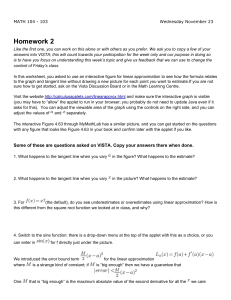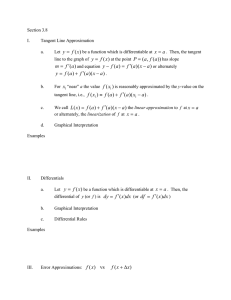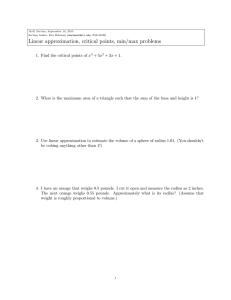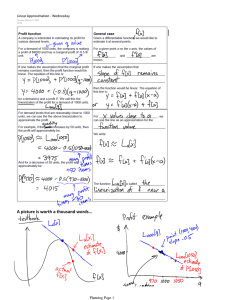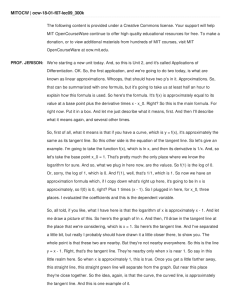Homework 2
advertisement
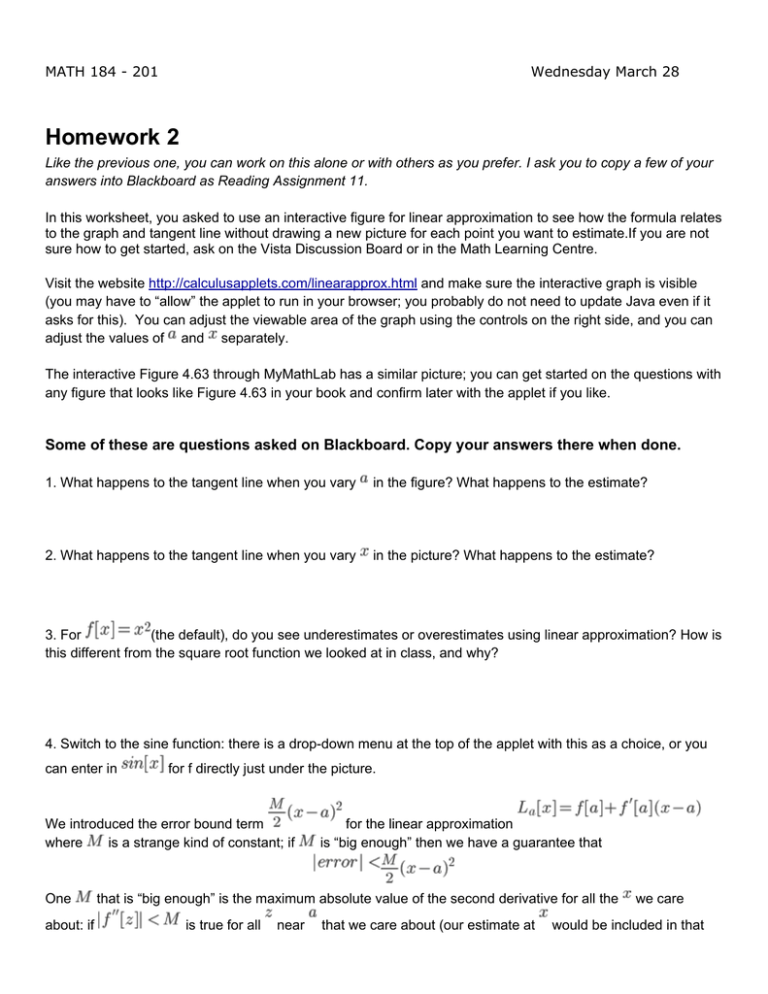
MATH 184 - 201 Wednesday March 28 Homework 2 Like the previous one, you can work on this alone or with others as you prefer. I ask you to copy a few of your answers into Blackboard as Reading Assignment 11. In this worksheet, you asked to use an interactive figure for linear approximation to see how the formula relates to the graph and tangent line without drawing a new picture for each point you want to estimate.If you are not sure how to get started, ask on the Vista Discussion Board or in the Math Learning Centre. Visit the website http://calculusapplets.com/linearapprox.html and make sure the interactive graph is visible (you may have to “allow” the applet to run in your browser; you probably do not need to update Java even if it asks for this). You can adjust the viewable area of the graph using the controls on the right side, and you can adjust the values of and separately. The interactive Figure 4.63 through MyMathLab has a similar picture; you can get started on the questions with any figure that looks like Figure 4.63 in your book and confirm later with the applet if you like. Some of these are questions asked on Blackboard. Copy your answers there when done. 1. What happens to the tangent line when you vary in the figure? What happens to the estimate? 2. What happens to the tangent line when you vary in the picture? What happens to the estimate? 3. For (the default), do you see underestimates or overestimates using linear approximation? How is this different from the square root function we looked at in class, and why? 4. Switch to the sine function: there is a drop-down menu at the top of the applet with this as a choice, or you can enter in for f directly just under the picture. We introduced the error bound term where is a strange kind of constant; if One about: if for the linear approximation is “big enough” then we have a guarantee that that is “big enough” is the maximum absolute value of the second derivative for all the is true for all near that we care about (our estimate at we care would be included in that interval of values). For example, from -1 to 1, or . Try setting has , and since the sine function varies . So in this case, is “big enough”, and we can conclude that and vary . Why does the error get so large as moves away from ? 5. Suppose you want to estimate values between 4.2, 4.345) using linear approximation to ● What is a good choice for for this case? ● ● and (the square roots of numbers like 3, 3.01, 3.6, : If I tell you that for between 3 and 5, what is a value of that works in the error bound formula? Sketch a picture (you may have room below) of this situation that would help you explain it to somebody else and bring to Friday's class. Don’t forget to enter your answers on Blackboard! That will help for Friday’s class.
